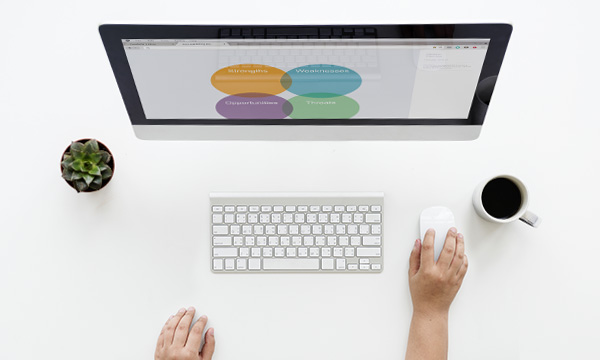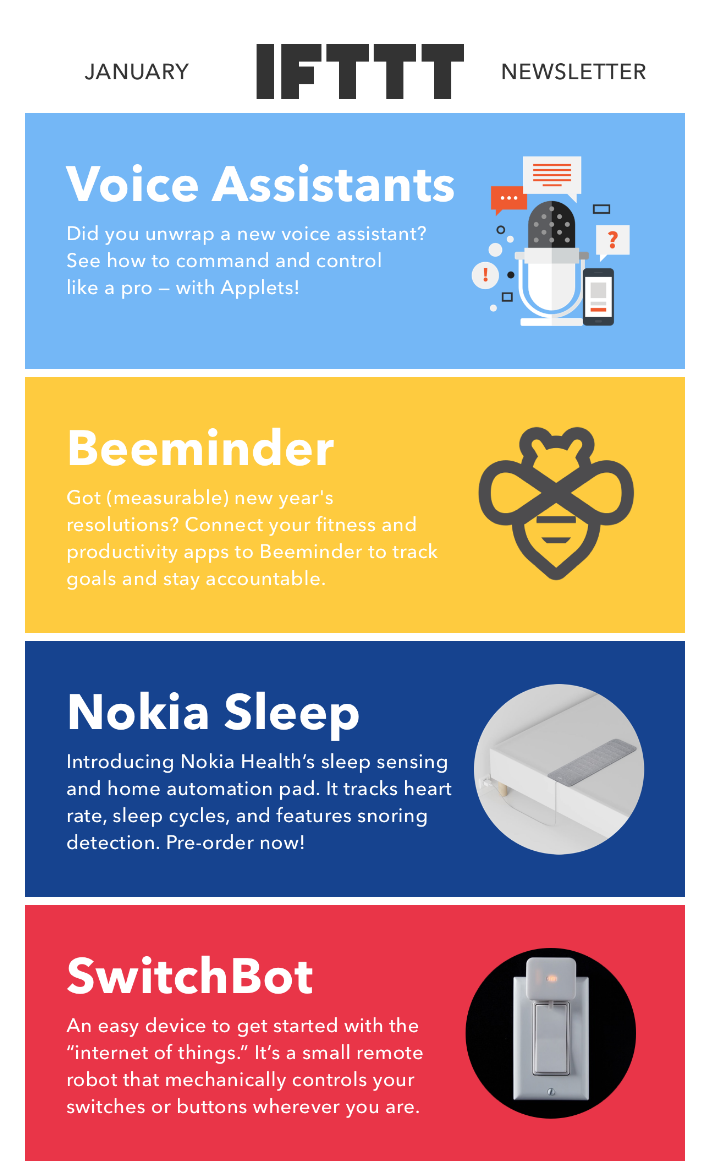Improving Email CTR: 5 Ideas Worth Trying

On an abstract level, we could define the click as the “key” that leads to the “waiting room” of the conversion. Whether it’s on a button, an image or a text link, the click – or tap, if we’re talking about mobile – is the basis of one of the most important Email Marketing metrics: the CTR.
Today, we’re going to study this small but fundamental gesture, a crucial aspect of success for the vast majority of email campaigns.

From developing integrations to strategic support, from creating creative concepts to optimizing results.
What is CTR?
Clearly, CTR is an acronym. It stands for Click-Through Rate.
CTR definition
It expresses the total number of clicks in an email as a percentage of the number of times the email has been opened.
This indicator can be broken down further, as we can count either the unique clickers (i.e. the number of recipients who have clicked at least once in the message) or the total clicks.
To clarify: a recipient could receive an email containing five links and click on all five. In this case, we would have:
- 1 unique clicker
- a total of 5 clicks
When I calculate a CTR – or I’m given one by the agency responsible for sending a message on my behalf – I need to be aware of which numbers have been used to work out the figure: unique clickers or total clicks?
CTR: the formula
We normally count individual clickers, but some agencies, attempting to offer apparent excellent results, use total clicks. Once established whether to consider single clickers or total clicks, it must be established whether to report the same in the total emails sent rather than those of the emails addressed. Therefore, according to the terms of reference, we can give three different definitions of CTR:1
- CTR is understood as the relationship between total clicks and emails sent
- CTR is understood as the relationship between individual clickers and emails sent
- CTR is understood as the relationship between individual clickers and emails addressed
The last of the three approaches is perhaps the most conservative, but also the most correct, able to return a better campaign performance. How to calculate a CTR?
CTR formula
(Single clicks / Emails addressed) * 100
What is the proper value of CTR?
What ceiling must I reach for my campaigns to have an acceptable rate of clicks? It is absolutely not possible to give a proper response. The best way to orient yourself is by considering external references, such as the pertinent commercial sector and sending category (newsletter, promotional emails, and transactional emails).
To assist us is the latest Statistical Observatory, which analyzed the enormous number of items sent from the MailUp platform: more than 12 billion emails.
It is worth emphasizing that from the 2017 edition there was an increase in total clicks of 36.9% from the previous year. This shows that companies are refining their means and techniques in using email channels; in particular, they take greater care in creating entirely mobile responsive messages (encouraging optimal use and usability, also on small screens) and full color background. In general, it improves the graphic rendering of the messages, for the entire advantage of the clicks.
We see, from our Observatory, which sectors shine in the CTR and which have the worst performance:
DEM
The best
Wholesale Commerce: 9%
Industry: 9%
Fashion, Clothing, Shoes: 20%
Dining: 37%
The worst
Publicity /Marketing Agencies: 0.5%
Training/Work: 1%
Public entities: 2%
NEWSLETTERS
The best
Non-profit: 16%
industry: 20%
Consulting/Professionals: 27%
The worst
Tourism: 1%
Music and Entertainment: 1%
Encouraging the click: 5 points for reflection
For now, let’s leave aside the external factors (benchmarks and sending category), to concentrate on the intrinsic properties of emails. The factors that condition the success or failure of a campaign are different.
We can imagine it as intersecting axes:
- Vertical axes: copy and design (usually texts and graphics)
- Horizontal axesones: the main elements constituting an email: from the farthest to the closest to the click, we find the subject, header, body, call to action.
Let’s take a look now at five perspectives through which we can analyze emails, accompanied by some excellent examples of real campaigns that, in our perspective, have their ducks in a row to optimize the performance of clicks.
Recalling, however that any optimization, especially in Email Marketing, must pass through an activity of A/B testing, which means comparing two or more variants of the same email to know which is able to obtain greater and better responses in terms of clicks by recipients. You can conduct A/B tests to compare multiple versions of the call to action (below is an example) the images of the email or the subject. In our blog you will find a series of posts to make the argument more in-depth.

1. The reverse pyramid
The first point is structural. This is a pure compositional order. It is called an overturned pyramid and is a criterion for distribution of the content of the email that, curiously, is the opposite of that of the world of news.
While in editing magazines and newspapers the structure pyramidal–title and the most important information at the top, followed by all the rest –, in email marketing, we see the opposite: the heart of the communication, the call to action, is at the bottom.
Here is an excellent example:

A general disposition accompanies the reader along the different levels of reading:
- The image, which introduces and offers the first suggestion or point of interest
- The body copy, which briefly illustrates the reason for the communication
- The call to action button, the culmination and final goal of the message.
The reverse pyramid offers a model of functional reading, because it adheres to the ultrafast reading category (so much that we can refer to it as “scanning”) that characterizes the use of emails today.
The BEE editor, integrated in the MailUp platform, allows for the creation of this structure with simple drag & drop operations. Four elements are enough: Image module for the header, two Text modules for title and summary, and a Button module for the call to action.

2. Coherence of brand identity
This is another “macro” point that helps understand that emails are not supplemental communications, but extensions of the brand identity itself. Thus, it is important to maintain the graphic appearance chosen for the site and other institutional sites.
It is not the colors, but also the font, tone, and proportions. Briefly, the design of the email must instinctively recall the brand imagine stored in the imaginary of every recipient. Let’s look at this screenshot of the IFTTT site.

Here, on the other hand, is another “clipping”, this time from an email sent from the same entity. That is to say, the two channels speak the same language.

It is not simple formal strictness, but a real incentive for click rates: among the flows of spam reaching our inbox daily, clicking on the email represents an act of trust in the brand which sent us that email. From the faith leading to the click arises the recognizabaility and familiarity of the brand.
The formula is simple:
Recognizability → Trust → Click
Apple is another excellent example. The layout of the email immediately recalls the brand identity we have assimilated over time.

3. The world of images
According to a study by Vero, companies that use images in their email campaigns enjoy a click through rate 42% higher than those that do not do so.
Whether stock photos or originals, images allow backing up what we consider the nature of the email, being a presentation, notification or, as we like to think, a flyer.
Today, however too many marketers create “walls” of text in their emails with the aim of being completely exhaustive in communications. This is an error in perspective, which also affects the rate of unsubscription: the email must be an invitation to obtain more information by clicking on it.
This is one of the best examples of email-flyers that we are sure obtained much higher rates of clicks than the market average.

This last example gives us the possibility to shed light on another factor conditioning clicks on email. In a list of recipients, there is always a consistent slice of users that, after having opened the email, postpone clicking to another time. We are sure that many of these never complete the action.
Here, a countdown becomes a tool to capitalize on this sector of recipients and lost clicks. In addition to giving the email a dynamic impulse, the timer encourages people to click immediately.

4. The use of colors in the call to action
We have reached the element in an email that most catalyzes the aspired-for gesture, the click. Here, copy and design ability converge: the first must not be a mirror of the action (“click here”), but prefigure the advantage that can be obtained by clicking. The design must give the right proportions to the button and especially a color that stands out, and at the same time, harmonize with the dominant one in the rest of the email.
WDC’s chromatic choices are effective, to give you an example of a campaign belonging to a different sector and to distance ourselves from the strictly commercial world.

5. The stroke of genius
The following email was shown several weeks ago in our awards for the most beautiful emails of 2017. At the risk of repeating ourselves, we are showing it again because it is special: it plays on the sense of email marketing and the bottom, combining entertainment and technology. As we asked ourselves in our blog post, what CTR ceiling did this email reach? 99%?

Or this one from Uber, which, instead, creates synergy of meaning between the call to action and the creativity of the entire email. It all plays on the action of synchronization.

These two cases demonstrate, differently from those above, how pure creativity is the strongest incentive to click on the email.
How and when to consult the CTR
The analysis of email performance (address rates, opening, clicks, conversions and others) is a decisive moment in an Email Marketing strategy. MailUp gives you access to an area of the platform in which to find advanced reports to know the campaign progress in real time.
In particular, thanks to tracking the links in the message, then measure the relevance of the call to action, consulting the exact number of the clicks on each link in the email. If you are not already using it, we invite you to try the platform free for 30 days.
